Meet Fine Wine’s Newest Superstar, Charles Lachaux Of Domaine Arnoux-Lachaux

Everyone wants a piece of Charles Lachaux, the vigneron at Domaine Arnoux-Lachaux in Vosne-Romanée, Burgundy. Lachaux is the most talked about man in the fine-wine world today. His phone rings off the hook – wine lovers, merchants and press, all of whom want to meet him, taste his wines and beg for an allocation.
The demand for his wines is insatiable and, inevitably, their price has gone stratospheric. It’s only been in the last two years for his star to truly rise, but he had been receiving high praise in the preceding five: Now, at just 33 years of age, Charles Lachaux is undoubtedly one of the most famous winemakers on the planet.
More from Robb Report
The 11 Best Wine Books Every Oenophile Needs in Their Library
The World's Oldest Charity Wine Auction Is Poised for Its Biggest Year Yet
Minerality in Wine, Explained: How It Affects Taste, Aroma and Texture
As can be the way, as quickly as Lachaux has become famous, so too have his detractors multiplied, particularly in the sometimes gossipy and competitive landscape of Burgundy, where Lachaux has created enemies and those who shake their head in disapproval in a way that only the French know how. There are some who look forward to what they see as his inevitable downfall. There are others who pray it comes quickly. And there are those, who have known Charles since he was a child, who worry that it has come all too quickly for his own good.
Mature Beyond His Years

I first met Charles when he was interning at Armit Wines in London, more than 12 years ago. What his detractors might not know is that he’s made of stern stuff. “Mature beyond his years, convinced and persistent,” is how Louise, his wife, describes him. He’s mentally strong and very sure of himself, without a whiff of arrogance—super-smart and confident, his friends describe him as “talking like a man in his fifties”. Charles has a very clear idea of the direction he’s traveling in. He’s also aware that success breeds jealousy and resentment. “So be it,” he says.
A Family Estate
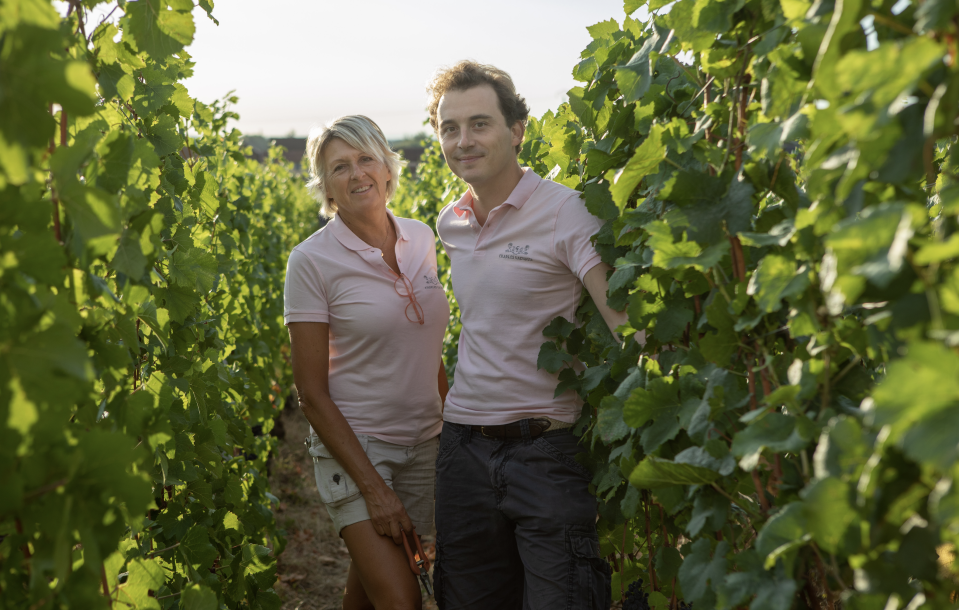
Charles grew up in Vosne-Romanée, arguably the most iconic red-wine village in the Côte de Nuits—the principal red wine area of Burgundy to the north of Beaune. His mother, Florence, had inherited a sizable estate from her parents, which was founded in 1858 by Charles Arnoux. Florence’s father encouraged her soon-to-be husband, Pascal Lachaux, to become the estate’s vigneron, despite him having no previous winemaking experience. The estate, Domaine Robert Arnoux, boasted some of Burgundy’s top vineyards including the Grand Crus of Echézeaux and Romanée-Saint-Vivant (RSV), as well as a great plot of old vines in the Premier Cru vineyard of Aux Reignots.
During his tenure, Pascal raised the reputation of the estate, albeit not to the elevated levels of his esteemed village neighbours, Domaine de la Romanée Conti, Domaine Leroy and Domaine du Comte Liger-Belair. Perhaps Pascal’s biggest contribution was recognizing talent in his oldest son, Charles, and allowing him full control of the winemaking side of the family business from 2015. (Charles has two younger brothers: Antoine, a Paris-based architect, and Max who is still at school).
In 2019, Pascal and Florence divorced, with Pascal relinquishing his stake in the estate which has been called Domaine Arnoux-Lachaux since 2007. Today, Charles works alongside Florence, who is responsible for the estate’s administrative affairs, allocations and the harvest team.
After schooling in nearby Nuits-Saint-Georges, Charles did his BTS in Viticulture and Oenology at the Lycée Viticole in Beaune, followed by a Bachelor of Commerce at INSEEC Business School in Bordeaux. Interning at a London wine merchant in 2010, he then returned to Burgundy to work at Domaine Tollot-Beaut and Domaine Armand Rousseau under the tutelage of Eric Rousseau. Returning to his family estate after the 2011 harvest, he used his earnings in these early years to travel, while also working at wineries in Oregon, New Zealand and South Africa.

On a more personal level, Charles and his wife, Louise, first met at primary school and became romantically involved in their early 20’s. Louise is an illustrator from a family in the hospitality business, and was responsible for rebranding the Domaine labels in 2018. “My wife is full of joy,” according to Charles, “and always worrying and caring for others, rather than herself.” They were married six years ago and now have two children.
It All Began With Whole-Clusters
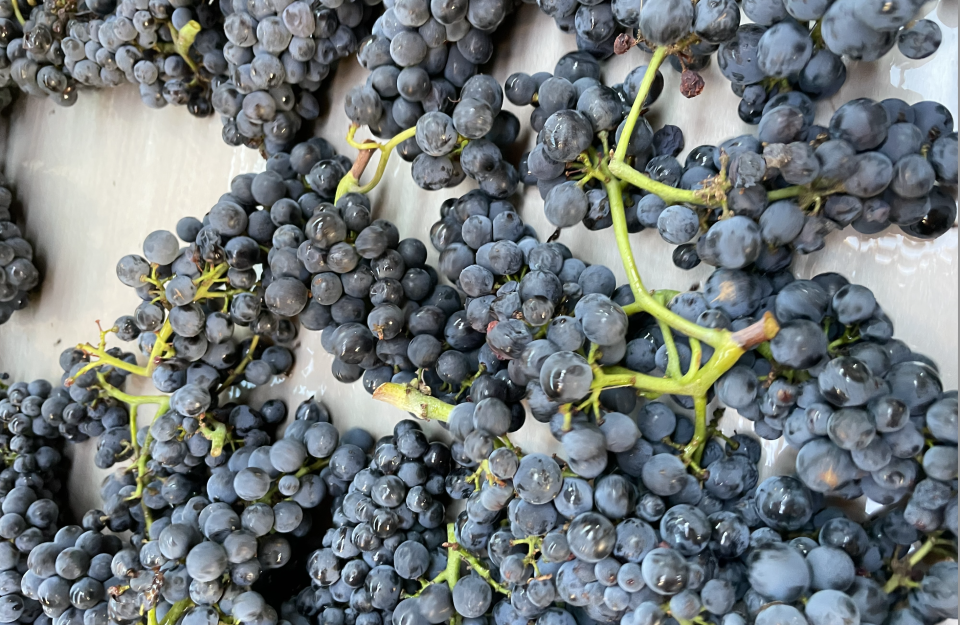
Charles’s journey to superstardom began in 2012 with his first major wine-making decision: he started to work with whole-cluster fermentation (rather than de-stemmed grapes) to add extra dimension to the wines—more texture, floral notes and spiciness, even in weaker vintages. A keen lover of older vintages of Domaine de la Romanée Conti and Domaine Dujac, he wanted to make wines of a similar level, and the use of whole-clusters (also known as ‘whole-bunch’) was one important ingredient to reaching that goal. Although whole-cluster fermentation results in lower overall acidity, Charles likes the freshness that the wines attain, a paradox that is not universally understood.
Taking Inspiration From Others

One of his memorable ‘wow’ moments came when tasting the 2006 Domaine Leroy’s Savigny-les-Beaune Les Narbantons. Once again, he vowed to make wines of this level. Observing how Lalou Bize-Leroy was not trimming her vines, he decided to follow that lead. From 2014, he experimented in his old-vine Aux Reignots vineyard and liked the results. By 2016, a third of his estate’s 14 hectares— representing 16 separate cuvées (bottlings)—were from vines that had not been trimmed. By 2019, 100 percent of the estate’s vines were untrimmed.
His admiration and friendship with Olivier Lamy of Domaine Hubert Lamy in Saint-Aubin, Thomas Bouley of Domaine Jean-Marc Bouley in Volnay and Jean-Marc Vincent from Domaine Jean-Marc Vincent in Santenay inspired him to change his vineyard pruning methods and evolve his viticultural practices. Beginning in 2014, rather than using classic Guyot pruning, he adopted the Guyot Poussard style as he believed it respected the sap flow of the plant and avoided mutilating the vine, leading to more balance in vine health. From 2016, he moved to organics, eventually leading to biodynamic viticulture from 2018.
Treating Each Vine As Individual
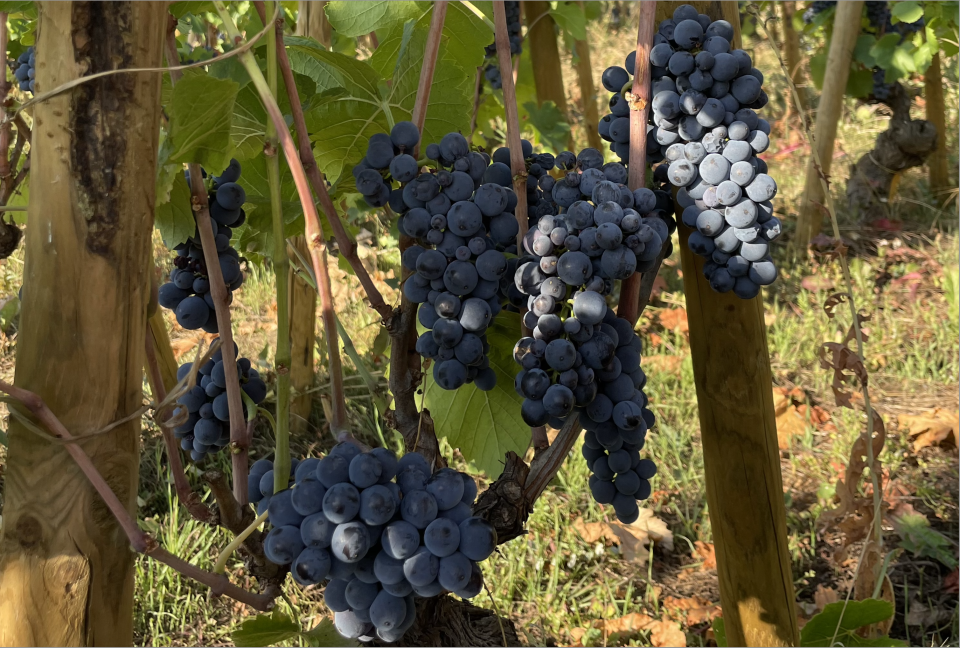
Perhaps the most important evolution in his winemaking practices came in 2016, when he decided to experiment with a new vine-trellising system used mainly on the steep slopes of the Northern Rhône. The Echalas (or Paisseaux, as it is known in Burgundy) allows for much greater vine density (17,000 vines per hectare) and treats each vine as its own “individual”, according to Charles.
The vines are attached to individual long stakes, requiring the vigneron to care for each and every vine specifically. His friend, Nicolas Faure, had been using the Paisseaux on his hillside vineyards in Nuits-Saint-Georges and recommended that Charles experiment with it. Although the cost (two Euros per stake) and heavy workload of staking each vine is high, Charles loved the results. Today, Charles has three hectares of his Domaine that are fully staked.
Charles’s next innovation was to use Paisseaux with tall stakes (two metres) in his vineyards, longer than those normally used in the Côte d’Or (where 1.4 metres is typical), principally to make vineyard work easier. He found using tall Palissage improved the overall quality in the vineyard. Lalou Bize-Leroy visited his Aux Reignots vineyard and quickly decided to adopt tall stakes in Leroy’s vineyards. Friend and neighbour, Jean-Yves Bizot of famed Domaine Bizot decided to do the same.
Other vineyard innovations followed. In 2019, he moved to a new pruning method developed with his vineyard manager which they call “The Arnoux-Lachaux Gobelet”, which allows for less buds per vine and lower yields, while avoiding further mutilating the vines (the rules are dependent on the strength and condition of each individual vine). He has also been the first-mover in the Côte d’Or to introduce sheep in the vineyards from 2021: the sheep eat the grass and provide natural fertilization. (No doubt we will soon see flocks of sheep roaming the hills of the Côte d’Or as other vignerons follow Charles’s lead.)
Striving For Purity

In the cellar, there have been significant and controversial changes, none more so than eschewing wooden barrels to “raise” the wines (élevage). Although it’s no longer rare to see winemakers experiment with non-wooden vessels to age their wines—whether they be stainless steel tanks, cement tanks, or earthenware vessels—Charles is the only vigneron in Burgundy to be raising all his reds in ceramic. He first experimented with these vessels in 2020.
From the 2022 vintage, 100 percent of his wines were aged in ceramic sandstone vessels, custom-made to fit into the elevator that brings them down to his underground cellar. The only other red winemaker I know working solely with ceramic is the maverick Bordeaux vigneron Loic Pasquet at Liber Pater, who interestingly is using the same Italian-manufacturer of ceramic vessels, Clayver.
Charles’s reasoning for ageing his wines in ceramic seems so logical that it’s a surprise others have decided not to experiment themselves. There is no extra taste contributed from the ceramic, in contrast to wooden barrels. The wines are therefore purer, as well as being more ecologically friendly. Importantly, the wines are, by definition, more homogenous, whereas wines raised in wood will taste differently barrel by barrel. “Why change the vintage signature of my wines by aging them in oak? It doesn’t make sense to me,” says Charles.
There are other distinct advantages. The sandstone ceramic uses no chemicals in its manufacture—just soil and water. They are easy to clean and theoretically last forever. The wine in the vessels doesn’t need to be topped up more than five times a year, because the ceramic doesn’t dry out as would be the case with a wooden barrel—there’s very little absorption of wine through the sandstone. However, the sandstone does allow for air exchange (it’s not hermetic), which means Charles is able to increase the élevage to two years (and soon to 30 months), allowing for finer, more precise and complex wines that will likely age in the bottle for longer.
Doing Much Of Nothing
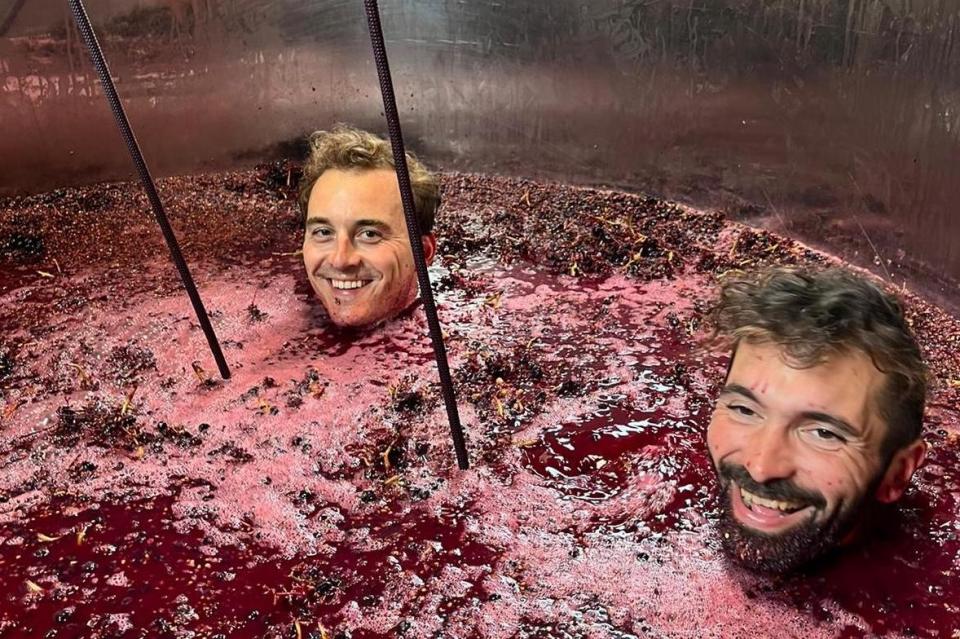
From 2018, Charles decided to simplify the vinification by “doing much of nothing”, the idea being that the grapes—not the vigneron—should express the vintage. Uniquely perhaps, he insists on doing the punch-downs of the cap (‘pigéage’ in French) only twice, using the ancient method of foot-treading, insisting that the whole team (including his children) take turns, right up to their neck-lines. From 2019, having learned that only the best cork boards can be used to make longer corks, he started to use the ‘Fleur’ range of quality-guaranteed, longer corks from Spain’s Francisco Sagrera.
Naturally, everything Charles has done in the vineyard and cellar comes at a cost. For starters, his yields are tiny (deliberately so). From his 14 hectares, he makes a mere 25,000 bottles each vintage, whereas he could easily be making 100,000. Staking each individual vine is extremely costly, and beyond the means of most estates. Lengthening the élevage to 30 months requires more physical space to warehouse the wines, and inevitably means less cash flow compared with the usual 12 months in barrel.
Ensuring he has the requisite number of ceramic fermentation vessels is expensive, added to the fact that the manufacturer has capacity to produce only three vessels per month. In short, what Charles has chosen to do has not only been extremely risky—both financially and in terms of going against conventional wisdom—it is unlikely to be adopted by many of his fellow vignerons, however spectacular the results.
‘Oui, Monsieur Le Président’
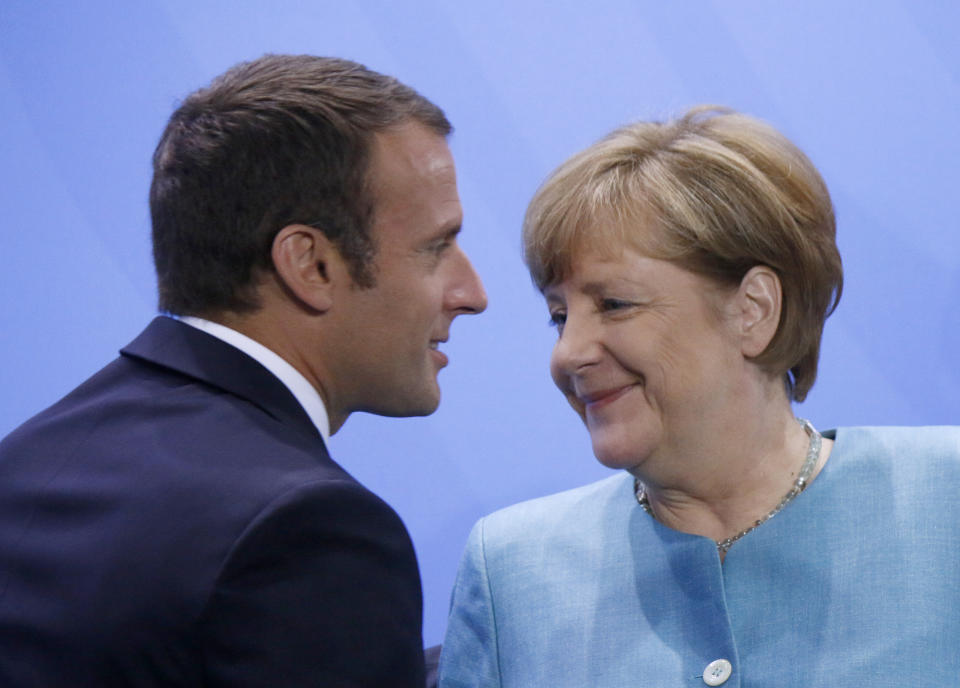
In July 2021, I called Charles to tell him that he had won the Golden Vines World’s Best Rising Star Award 2021. Four hundred and forty-two members of the fine wine industry from 55 countries had voted in the annual poll, with the results independently verified by Deloitte. There are no short-lists for this Award. Voters can vote for whoever they want. Charles received his Golden Vines Trophy at an awards ceremony held at Annabel’s Private Members Club in London on 7th October 2021. And then it all began to go crazy.
Returning to Burgundy from London, Charles started to receive multiple requests for interviews from the media. Then television crews started to turn up. Then came the flurry of emails from wine merchants and collectors asking to buy his wines. But the biggest moment was still to come: a phone call from the Elysée Palace asking if Charles had time to speak to the President of France.
Charles thought it was a prank by a friend. Still not knowing if it was a joke, he agreed to the call. President Macron congratulated Charles on his award, and asked if he would like to join him and German Chancellor Angela Merkel for a concert in Château du Clos de Vougeot. A hand-written note from “E.M.” soon followed. Within days it appeared that everyone in Burgundy—if not France—knew of the President’s endorsement of the newest star of La République.
The Golden Vines Effect
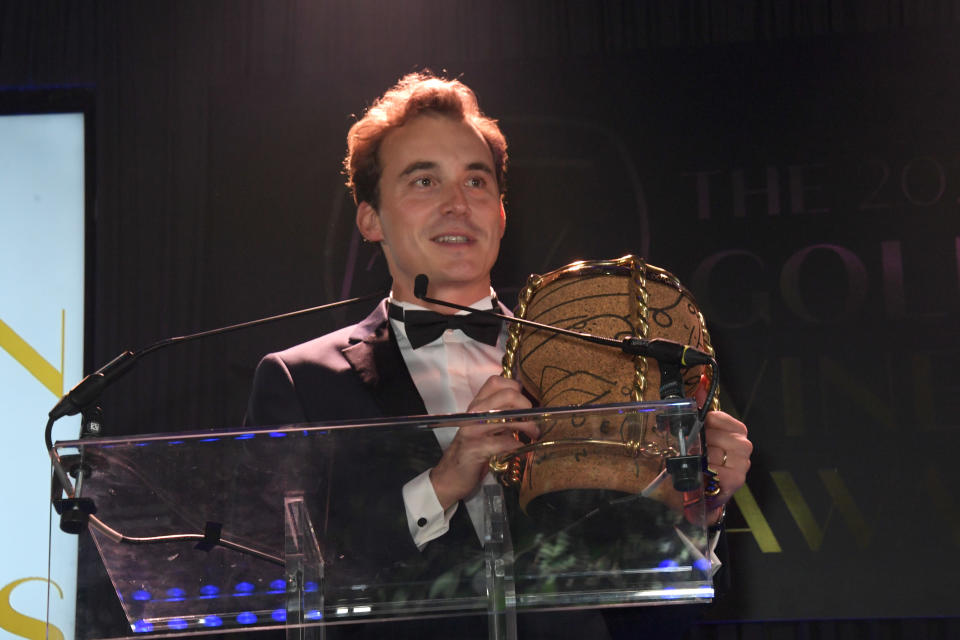
“The Golden Vines Award changed my life, both professionally and personally,” Charles later told me. “It became far wider and much more public than I could have expected, especially after President Macron’s interest. The impact on the pricing of my wines in the secondary market was explosive to say the least.” The attention inevitably led to jealousy and back-biting. “People either support you or they don’t—I now have friends or enemies; everybody has an opinion about me, whether they know me or not.”
“The Golden Vines Award made big talk in Burgundy; now, wherever people go to taste in the Côte d’Or, they hear my name, for good or for bad.” Some vignerons are fed up with hearing the question, “Do you make your wines like Charles Lachaux?”
As the founder of the Golden Vines—along with my colleague Sasha Lushnikov—I have also experienced a fair amount of criticism. “Golden Vines has distorted the market-place… look at Arnoux-Lachaux’s prices? Why are they higher than for my wines?” one winemaker (of some of the world’s most expensive wines) angrily told a good friend of mine. Perhaps it is for this reason that Charles and I have developed a tight bond. We are both at the receiving end of quite a bit of criticism!
Luckily, Charles doesn’t blame me for his newfound fame. “I don’t regret it at all; my close friends are very supportive and those who aren’t clearly weren’t my friends to begin with. Because of the Golden Vines and our winemaking practices, I’ve been able to create new friendships with people such as Luca Roagna, who won the Golden Vines Rising Star Award the year before I did. I have also developed more friendships away from the wine world. And I’ve become closer with my family in order to cope with the increased pressure and attention.”
Joining The Elite
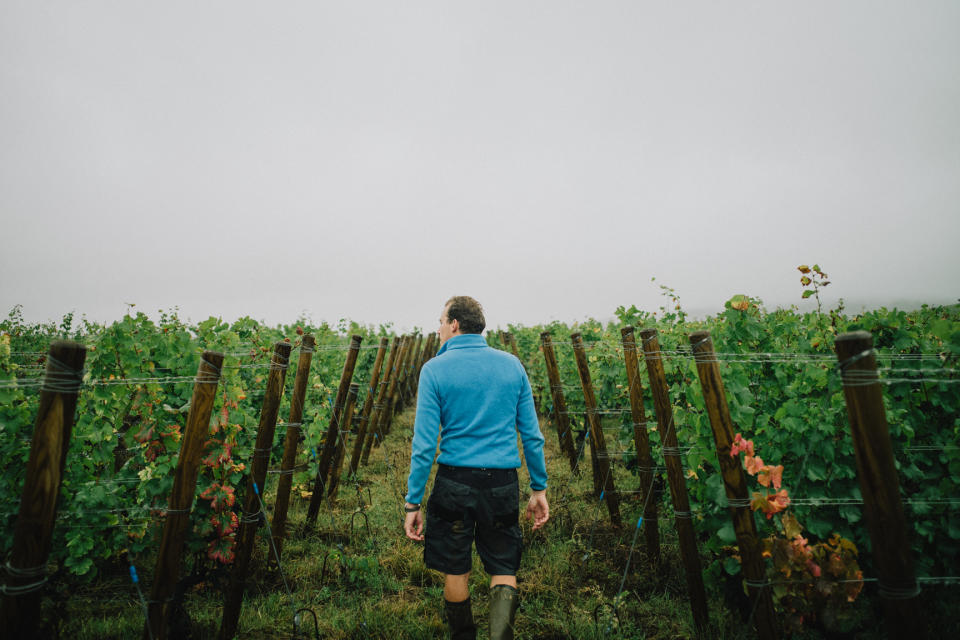
Even more attention was recently heaped on Charles’s young shoulders. The Liv-Ex Power 100 ranks the most powerful fine wine brands in the secondary market using five criteria, including price performance, total value and volume traded. As you would expect, it tends to be a jostling match between the same estates year-after-year: Domaine Leroy (which has recently dominated), Domaine de la Romanée Conti, Domaine Armand Rousseau, Petrus, Château Lafite Rothschild, Screaming Eagle, Dom Pérignon, Krug, Louis Roederer Cristal and a small list of other iconic estates. Breaking into this elite normally takes decades, if at all. In November 2022, the new rankings were published. Charles Lachaux’s Domaine Arnoux-Lachaux rose 60 places to second-place in the rankings, just behind Domaine Leroy.
The Liv-Ex Power 100 Rankings 2022 report stated: “[Domaine Arnoux-Lachaux is] this year’s second most powerful label… the estate has been one of the region’s rising stars for a few years now, but demand exploded in 2021-2022. Its average price performance was 487.2 percent but certain wines rose more than 1,000 percent.” Even Liv-ex remarked—as if influenced by Charles’s doubters—“It is possible that it is a brand that has already grown too hot for some to countenance buying.”
I asked Justin Gibb, Deputy Chairman and Exchange Director at Liv-Ex (the world’s leading B2B fine wine exchange), to explain the Arnoux-Lachaux phenomenon. “Many are drawn to his close connection to Lalou Bize-Leroy; some even suggest he may, one day, become the winemaker at Domaine Leroy,” he explained. “Many fine-wine buyers have been watching him for a while. And, of course, he won the Golden Vines Best Rising Star Award. Sustained demand will be crucial for prices to hold.”
“Demand has been growing exponentially; we see it also in terms of search queries for his wines across all platforms,” says Alfonso de Gaetano, the founder of Crurated, who sells Charles’s negociant wines. “This is the same for all the world’s best winemakers where there is very little wine for sale, and Charles is definitely in that distinguished group. I really don’t expect to see any slow down in the coming years. Most importantly, the quality of his recent vintages has been outstanding across the full range of his wines. If the quality is there, people want the wines, whatever the cost.”
Taking On The Wine Establishment
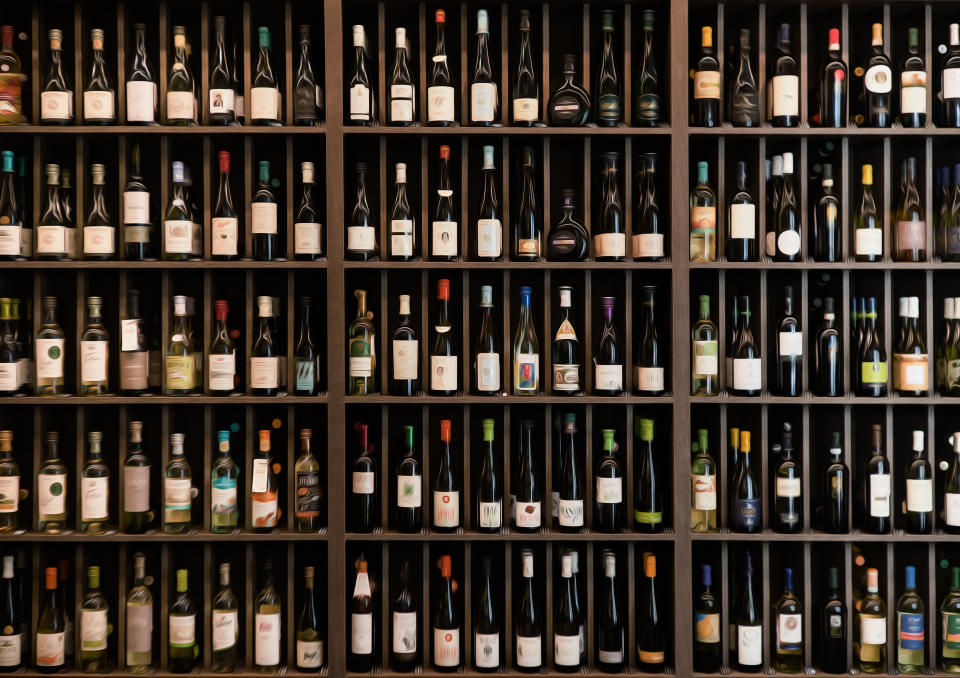
Along with a number of other top fine-wine estates, Charles has been rethinking how he sells his wines in order to reach the right customers and capture more of the final sales price. The traditional merchant model, where a winery grants exclusive or semi-exclusive distribution in a particular country, is slowly eroding. In part, this is because the wine estates perceive too much of the value is going into the pockets of third party middlemen and, in part, because they can’t control where the wines end up. (For instance, wines sold through London frequently turn up in Singapore, Hong Kong or China.)
Although Charles is keen to cater to long-time customers, he is also determined to ensure he has more control over where the wines end up. “Just like with my viticulture and viniculture, I want to be as precise in my marketing and distribution. Why are so many middlemen taking a cut each time before it gets to the end customer? I want to have direct contact with my end consumers.” For this reason, he has thrown his weight behind wine companies who are innovating new distribution models, such as Crurated, which uses an auction process—along with Non-Fungible Token (NFT) technology—to sell new vintage wines to collectors. Nibbling away at the perceived status quo, however, is unlikely to win Charles more friends and influence among the wine establishment.
Giving Back
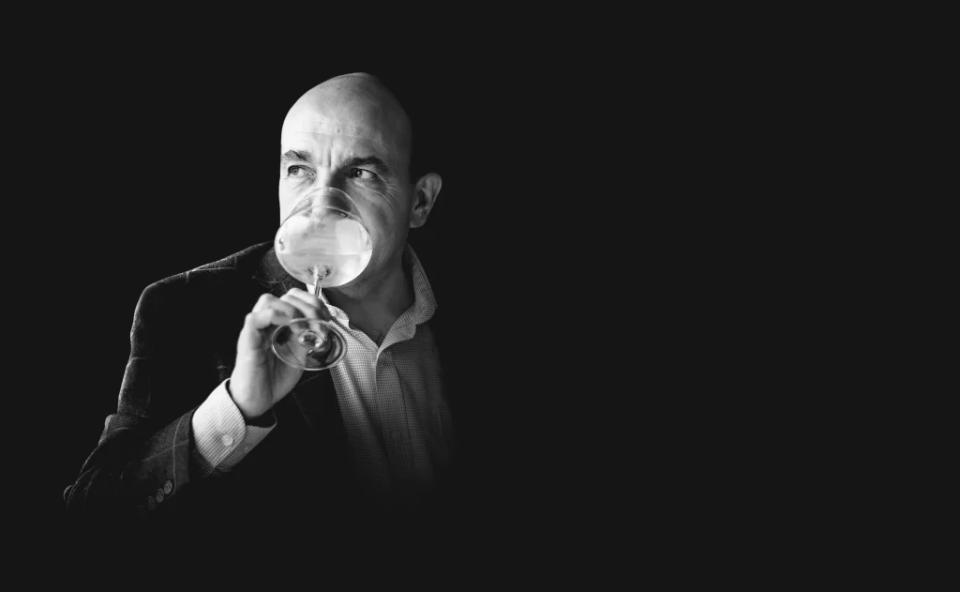
With his newfound fame comes responsibilities. Although Charles contributes wine to many charity auctions—including the Golden Vines Auction for the benefit of the Gérard Basset Foundation which funds educational programmes around diversity and inclusivity in the wine, spirits and hospitality sectors—he has decided to give a percentage of the estate’s turnover to a children’s charity called Les Violettes. He is also part of the Golden Vines diversity programme, providing internships to Golden Vines Scholarship winners.
Astonishing, given the cost and scarcity of his wines, he has also agreed to serve Domaine Arnoux-Lachaux’s Echézeaux Grand Cru at The Golden Vines Awards to be held in Paris in October 2023, where it will appear next to a number of other extremely rare and costly wines including Harlan Estate and Loic Pasquet’s Liber Pater, famed for making the world’s most expensive wine on release (more than £26,000 per bottle).
The Goal Ahead: Become An Icon
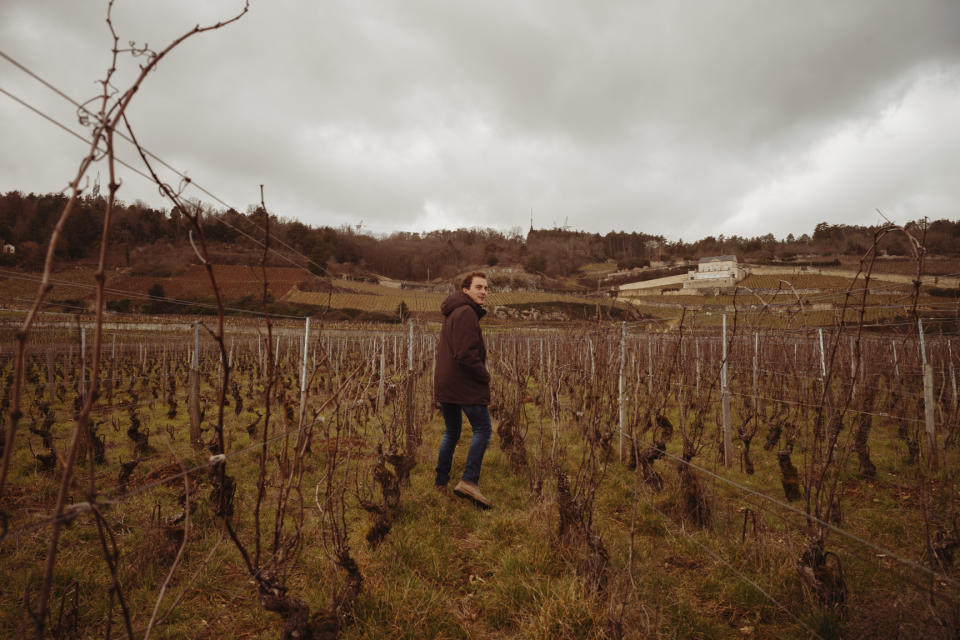
Charles has accomplished his 30-year plan in the space of four years. So, what’s next? “I want people to see my wine being poured at a restaurant table and say, ‘Wow, they’re drinking Arnoux-Lachaux’; my goal is that Arnoux-Lachaux has a similar reputation as Domaine Leroy—I aim to stay part of the best ranked fine wines in the world”.
Charles Lachaux’s Road To Stardom
2012: His first full vintage, including the introduction of whole-cluster fermentation
2014: Experiments with no vine trimming, and adopts Guyot Poussard-style pruning
2015: Pascal hands over the winemaking reigns to Charles
2016: Introduces tall trellising; expands no trimming and whole-cluster fermentation; introduces organic viticulture
2017: Reduces new oak élevage by 50 percent
2018: Embraces biodynamic viticulture; experiments with high density plantation in Aux Reignots (17k vines per hectare); introduces the Paisseaux vine training system; simplifies vinification (changing pigéage to twice only by foot) reduced to twice during fermentation; introduces new Domaine labels
2019: Opts for 100 percent no trimming; introduces ‘Arnoux-Lachaux Gobelet’; changes to longer, high-quality, more expensive corks; adopts tall ‘Palissage’ (a trellising technique) on 100 percent of his vineyards
2020: Experiments with ceramic fermentation vessels; increases length of élevage to 24 months
2021: Wins Golden Vines’ World’s Best Rising Star Award; rethinks distribution model for selling his wines; introduces sheep to vineyards as a sustainability measure
2022: Ceramic fermentation on 100% of the crop (no wood barrels) – Liv-Ex Power 100, World’s 2nd Ranked Fine Wine Brand
Assessed: Three Different Vintages of Charles Lachaux Favourite Cuvée: Vosne-Romanée Premier Cru Aux Reignots
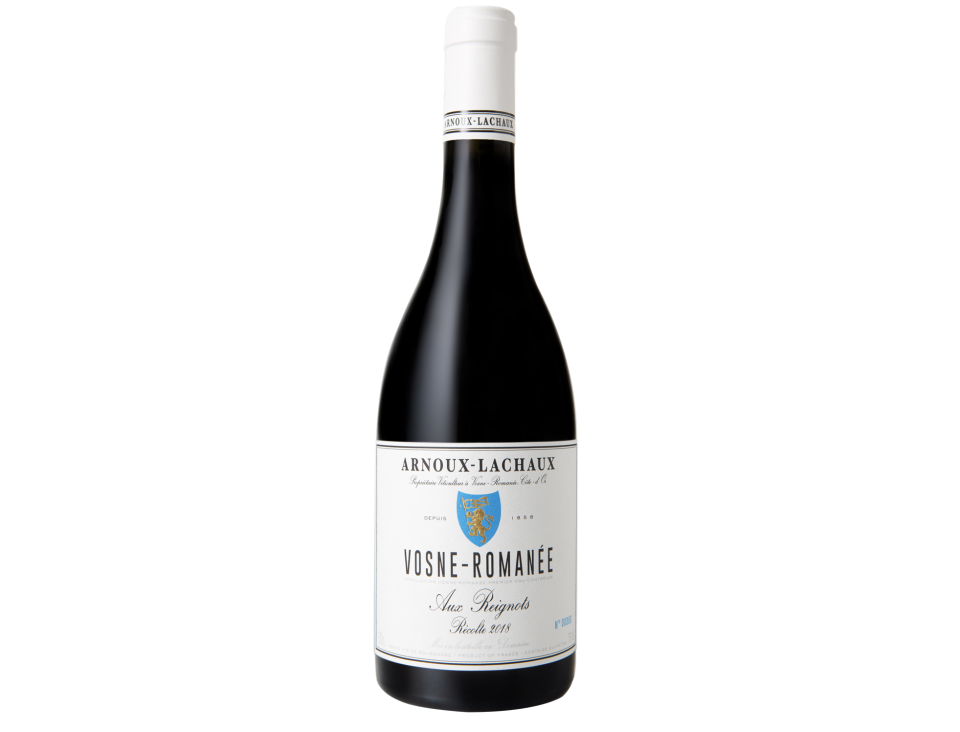
I first realised that Charles’ Aux Reignots was something special when I tasted the 2018 vintage at Corney & Barrow, his exclusive UK importer, in March 2020. Although not from a Grand Cru site, his Aux Reignots stood out as the star performer of the tasting. Therefore, it came as no surprise when Charles told me he considered the Aux Reignots as his top wine, helped by the intensity and flavour complexity that comes from very old vines.
To understand the impact of Charles’ work on this Cuvée, we tasted three different vintages of Aux Reignots together in November 2022—including a world exclusive, the first tasting by a non-family member of the 2021 vintage.
2012 Vintage: Charles’ first full-time vintage at the Domaine, and therefore prior to the considerable changes in winemaking that took place thereafter. The wine had a surprisingly deep ruby colour. An initial whiff of mushroom quickly blew off, but clearly the wine was already mature. Lacking the energy and vibrancy of Charles’ recent vintages, the wine was good, but far from spectacular. Nonetheless, I was very happy to drink it.
2019 Vintage: Vibrant colour, with aromas of violets, rose petals and dark-berry fruits and hints of sweet spice. The mid-palate was beautiful and intense. This is a serious wine to be pondered and debated: full of power and depth, with an electric, long finish. A real ‘wow’ wine.
2021 Vintage: the 2021 vintage is regarded as a ‘difficult’ one. Many of the region’s wines are dilute and lacking power. However, this Aux Reignots is a complete stunner, and certainly far better than any 2021 Burgundy red I’ve tasted to date. Light in color, its aromas are floral and red-fruited, with the same tell-tale spice as in the 2019. On the mid-palate, the wine was very energetic, hugely complex and multi-faceted. The finish was tremendous and extremely long. World-class.
Charles Lachaux’s Top Three Fine-Wine Experiences
Domaine Leroy, Savigny-les-Beaune Les Narbantons 2006
Domaine de la Romanée Conti, La Romanée Conti 1975
Domaine Charles Arnoux, Romanée-Saint-Vivant 1932 (pre-phylloxera vines)
Charles Lachaux’s Death Row Fine-Wine Choice
Domaine de la Romanée-Conti, La Romanée Conti from pre-World War I Vintage
Lewis Chester DipWSET is a London-based wine collector, member of the Académie du Champagne and Chevaliers du Tastevin, co-founder of Liquid Icons and, along with Sasha Lushnikov, co-founder of the Golden Vines® Awards. He is also Honorary President and Head of Fundraising at the Gérard Basset Foundation, which funds diversity & inclusivity education programmes globally in the wine, spirits & hospitality sectors.
The Golden Vines® 2023 will take place in Paris between 13-15 October 2023, recognising the world’s best fine-wine estates as voted by hundreds of fine-wine professionals. Please register your interest for tickets on the website. Robb Report is the Official Media Partner of the Golden Vines® and sponsor of the Golden Vines® World’s Best Fine Wine Producer Award.
Lead picture by Benjamin McMahon
Best of Robb Report
Why a Heritage Turkey Is the Best Thanksgiving Bird—and How to Get One
The 10 Best Wines to Pair With Steak, From Cabernet to Malbec
Sign up for Robb Report's Newsletter. For the latest news, follow us on Facebook, Twitter, and Instagram.

